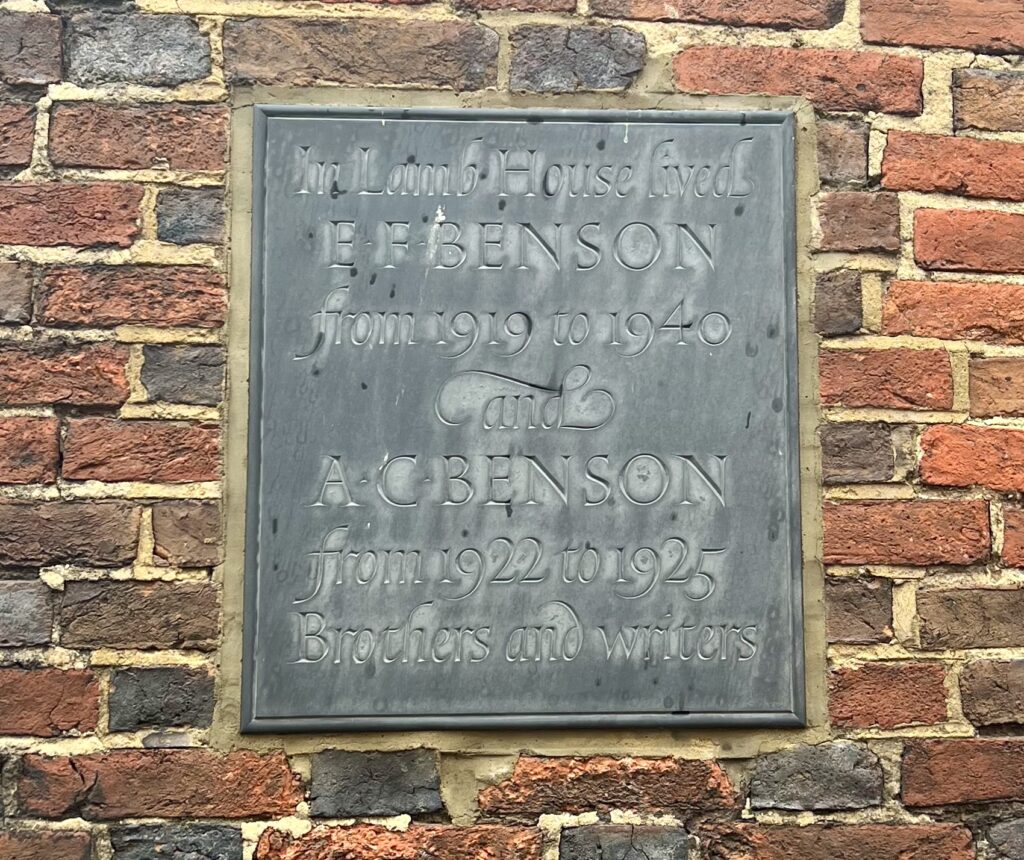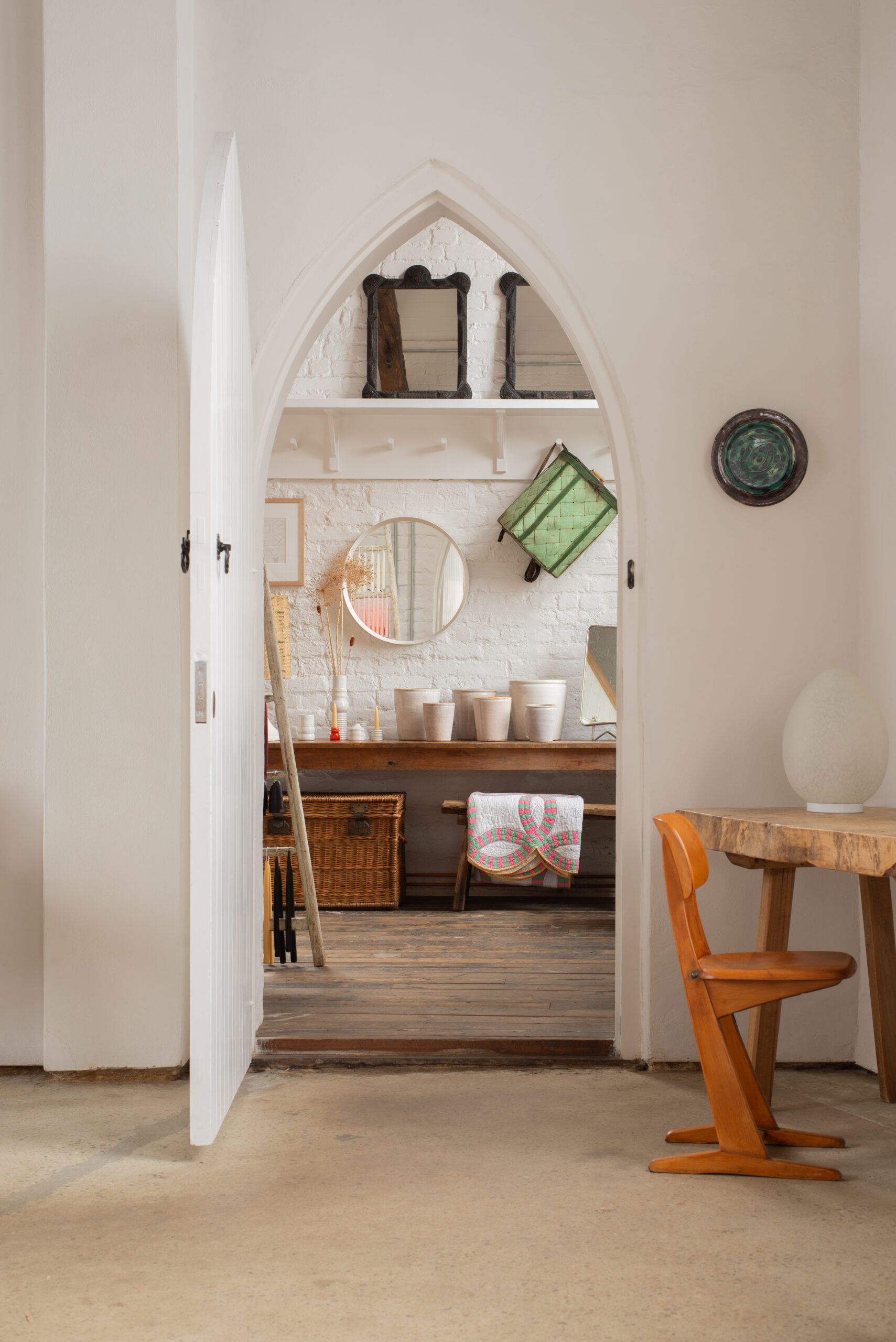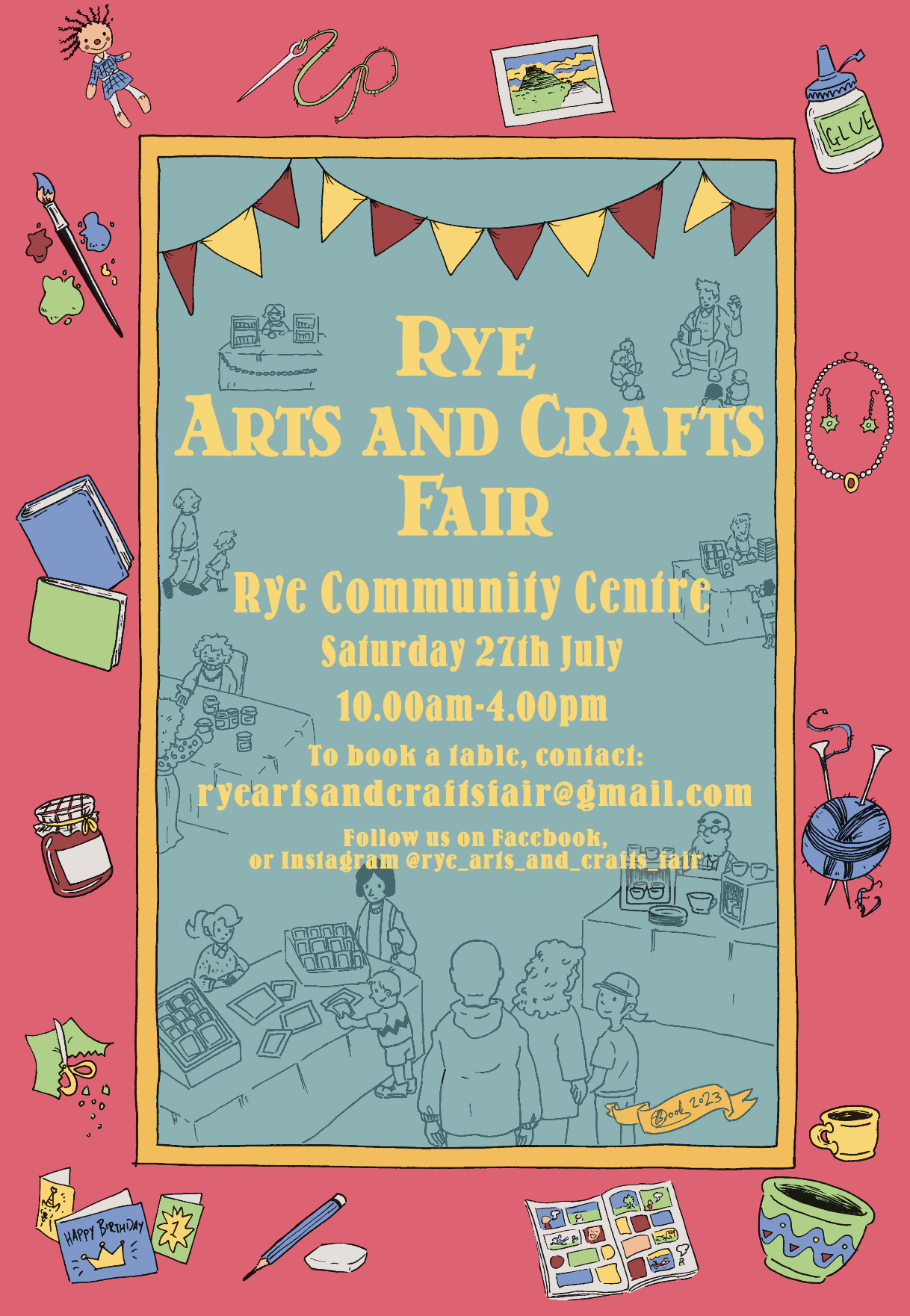Novelist, biographer, and benefactor of Rye.
Edward Frederic Benson was born July 24, 1867 at Wellington College in Berkshire, where his father was the Master. He was the fifth of six children born to Mary Sidgwick Benson and Edward White Benson, later Chancellor of Lincoln Cathedral, the first Bishop of Truro in Cornwall where he initiated the construction of the cathedral, and finally Archbishop of Canterbury (1882-1896).
Known to his family as Fred, young Benson was educated first at Temple Grove in East Sheen, Surrey, where he developed his love of music, nature and sport. His next school was Marlborough in Wiltshire where he studied for six years and played many sports and developed further his interest in nature and won a prize for his butterfly collection. He spent much time exploring nature in the Savernake Forest.
At the age of 20, he became an undergraduate at King’s College, Cambridge. Benson finished at Cambridge with a double first in Classics and Archaeology in 1892. His first major dig was at the walls of the city of Chester, where he made a number of important discoveries. From there he went to Athens to attend the British School of Archaeology.
His first book, Sketches from Marlborough, was privately published in 1889 and is a reflection on his happy school days. His first novel, Dodo, appeared in 1893 to great acclaim and success. In it Benson introduced as the central character, a woman who was very much an 1890’s person, witty, glamorous, used paradoxes, – an amoral person who charmed many of those around her but caused great distress to others.
E.F. Benson, when he was not travelling and participating in archaeological digs in Greece and Egypt, lived at Lambeth Palace until his father died in 1896, and then with his mother and sister in Winchester. In 1899 they all moved to Tremans, a large house in Horsted Keynes, north Sussex, until eventually he moved to London in 1902. From the publication of Dodo, which was a best seller, he published a book a year until his death in 1940. The only year without a publication was 1907, the year his sister Maggie, was taken into care. At the same time he was writing stories for many magazines and reviews.
For a brief period Fred served as administrator of a Red Cross fund for relief of Greek refugees from Thessaly, victims of the Graeco-Turkish War of 1897, a job which put him in considerable danger but provided material for future books. On his way back to England, he visited Capri and began a love affair with the island which lasted for many years and coloured much of his future writing. He took a joint lease of a villa there and spent time on the island each year until the First World War.
All of the Benson siblings were extremely intelligent and well-educated. All but the first-born, Martin, who died at 17, were published authors. Arthur ultimately became Master of Magdelene College, Cambridge, biographer of his father, author of many novels, memoirs, and theological treatises and composer of the lyrics of “Land of Hope and Glory”. Maggie and Nellie both died prematurely, but Maggie was an accomplished archaeologist and writer and Nellie immersed herself amongst the poor of Lambeth. Hugh was first an Anglican and then a Roman Catholic priest and a prolific novelist and theological writer. But Fred, who outlived all of his siblings, was the most prolific and successful author. His works included novels, memoirs, social commentary, a number of outstanding biographies, plus books about many aspects of sport, and dozens of supernatural and ghost tales which still attract a great following.
E. F. Benson is perhaps best known today for his delightful series of books featuring Emmeline Lucas (Lucia) and her social rival, Elizabeth Mapp. They were published in the 1920’s and 1930’s, the first being Queen Lucia published in 1920. It is set in Riseholme a fictional village that rather resembles Horsted Keynes. Miss Mapp followed in 1922, and is set in Rye or Tilling. The books portray the rivalries, plots and melodramas of small town life and are rich in descriptions of settings immediately recognisable to anyone who has walked the streets of Rye. The Mapp and Lucia stories were filmed in ten one-hour segments for television in the 1980s and have recently been made available for purchase in UK and US DVD formats.
Benson also wrote a series of books which are invaluable to students of the social and political world of the late C19th and early C20th. These include Queen Victoria, Queen Victoria’s Daughters, King Edward VII, The Kaiser and English Relations, and The Outbreak of War 1914.
Among his other biographies are books on Sir Francis Drake, Ferdinand Magellan, Alcibiades, and Charlotte Bronte. The latter is still regarded by many experts as the definitive work about the Yorkshire novelist. He chronicled his family in his autobiographies; As We Were, Our Family Affairs, Mother and Final Edition.
Benson’s connection with Rye began in 1900, the year of his first visit to Henry James, the novelist, who lived at Lamb House in Rye. When he was not visiting James, Fred often stayed with Lady Maud Warrender. Her house, Leasam, just outside of Rye, is a splendid landmark overlooking the countryside and was used as the setting for his novels Colin I and Colin II.
Within a couple of years of Henry James’s death in 1915, Fred became a winter tenant at Lamb House whilst others had the summer: he was a sub-leasee. In 1920 he and his brother Arthur took a joint lease on Lamb House and when Arthur died in 1925, Fred became the sole leasee. He lived there until his death in 1940.
Fred was a generous benefactor to the town of Rye. Among his gifts was the viewing platform at the east end of the High Street overlooking the Salts, the playing fields, and the river Rother. A plaque at the platform acknowledges the gift. Benson also paid for the partial renovation of the organ at St. Mary’s Church (a generous act duplicated by his heroine Lucia in one of the Mapp and Lucia books) and he made numerous other gifts to the town. He gave the beautiful stained glass west window in St. Mary’s in honour of his parents and was a joint benefactor in giving the south transept window in memory of his brother Arthur.
E. F. Benson served three terms as Mayor of Rye from 1934 to 1937. He enjoyed his Mayoral duties and as a Magistrate he administered the law fairly and with the same compassion and understanding that characterised all of his relations with the people of the town. In 1938 he was given the rare honour of the Freedom of the Borough. In the same year he was made an Honorary Fellow of Magdalene College, Cambridge, an honour earlier bestowed on Thomas Hardy and Rudyard Kipling.
Fred Benson died on February 29, 1940, ten days after delivering his last manuscript to his publisher. It was the text of Final Edition. He is buried in the town cemetery just outside of Rye off the road to Playden. A plaque on a choir stall in St. Mary’s Church pays tribute to his courage, kindness and generosity to the town. His grave is regularly visited by admirers and is maintained by the E.F.Benson Society which gathers there regularly to honour his life.
Benson’s books are highly collectible and are available from several used book shops in Rye as well as through the link above. The novelist Tom Holt has written two books (no longer in print) in the style of Benson, carrying the story of Mapp and Lucia into World War II.




